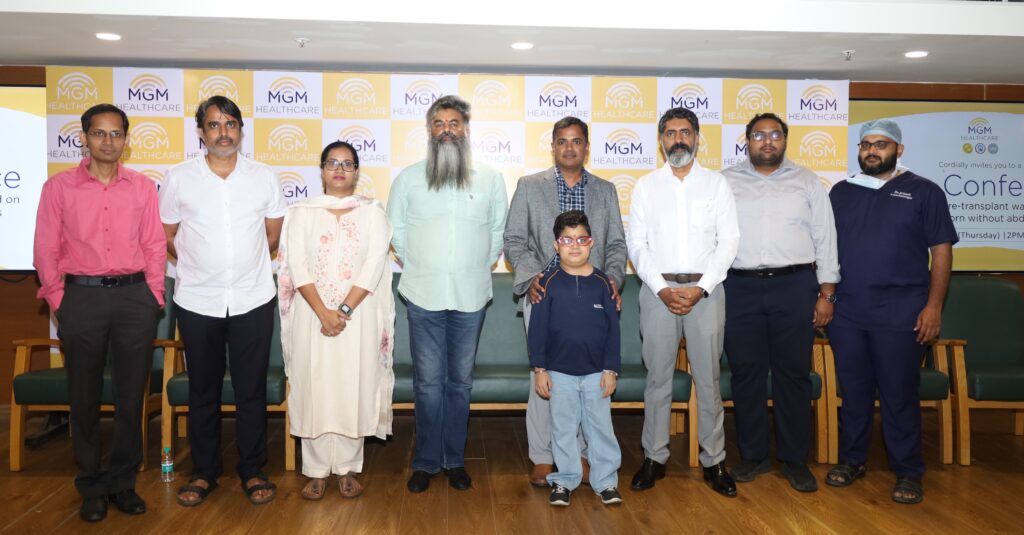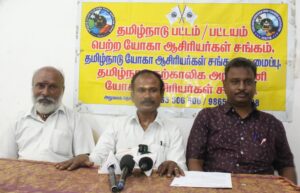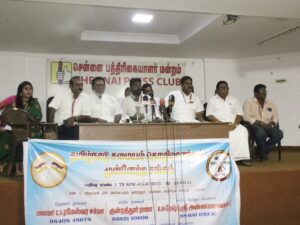Chennai, May 8, 2025: In a landmark surgical achievement, a multidisciplinary transplant team at MGM Healthcare successfully performed a complex renal re-transplant on a 12-year-old child from Lucknow, born with a rare vascular condition—classified as a V4 venous anomaly—that involved the absence of major abdominal veins and vein networks from birth.
The child had previously undergone a kidney transplant but had experienced graft failure and is waiting for the re-transplant. However, the absence of the usual venous drainage system presented a major surgical challenge. Demonstrating remarkable innovation, the surgical team identified and reused the venous pathways from the earlier transplant to ensure safe and effective placement and blood flow (perfusion) of the new graft. The old kidney graft was carefully removed while preserving the existing venous structures to facilitate the second transplant. The child is recovering well, demonstrating early graft function with no vascular or urological complications.
The surgery was led by Dr. Anil Vaidya, Chair and Director, Institute of Multi-Visceral and Abdominal Organ Transplant, MGM Healthcare, with support from a multidisciplinary team that included Dr. Sukanya Govindhan, Consultant Paediatric Nephrologist; Dr Senthil Muthuraman, Senior Consultant in Multi-Visceral and Abdominal Organ Transplant; Dr. Ram Gurajala, Interventional Radiologist; and anaesthesiologists: Dr. Dinesh Babu and Dr. Nivash Chandrasekaran.
In his comments, Dr. Ram Gurajala said, “A V4 venous anomaly is a rare condition where a child is born without the major veins (inferior vena cava and major iliac veins) in the belly and lower body that return blood to the heart. This makes surgeries like kidney transplants extremely difficult, as the usual pathways for blood flow are missing. However, we navigated this anatomical challenge by identifying and utilising the previously used venous outflow pathways, ensuring safe and effective graft placement and blood flow. This successful outcome brings renewed hope and quality of life to this young patient and family. It also paves the way for children with complex vascular anomalies—once considered unsuitable for transplantation—to be given a second chance through advanced surgical approaches.”
Dialysis is typically performed through either a fistula or venous access, but when these options are absent, a dialysis catheter can be placed. However, since the child had no patent veins that could be accessed from the groin or neck, the catheter was placed through a trans-lumbar approach (gaining access to the body through the lower back) into the inferior vena cava (IVC) above the kidney. This allowed the team to successfully dialyse the child for several months prior to the renal transplant. With the successful completion of the re-transplant, and the new kidney functioning well, the dialysis catheter is scheduled to be removed in a month.
Professor CM Thiagarajan, a senior nephrologist who was treating the child initially, said, “This case exemplifies how innovation and collaboration can redefine what’s possible in paediatric transplantation.”







More Stories
MDRF & US Scientists Discover New Diabetes Subtype: A Global Breakthrough in MODY Research
Dr Agarwals Eye Hospital’s Reticon 2025 Equips 1500 Specialists with Cutting-Edge Innovations in Retina Care
APOLLO DIAGNOSTICS REVOLUTIONIZES DIAGNOSTICS WITH DIGI-SMART LAB